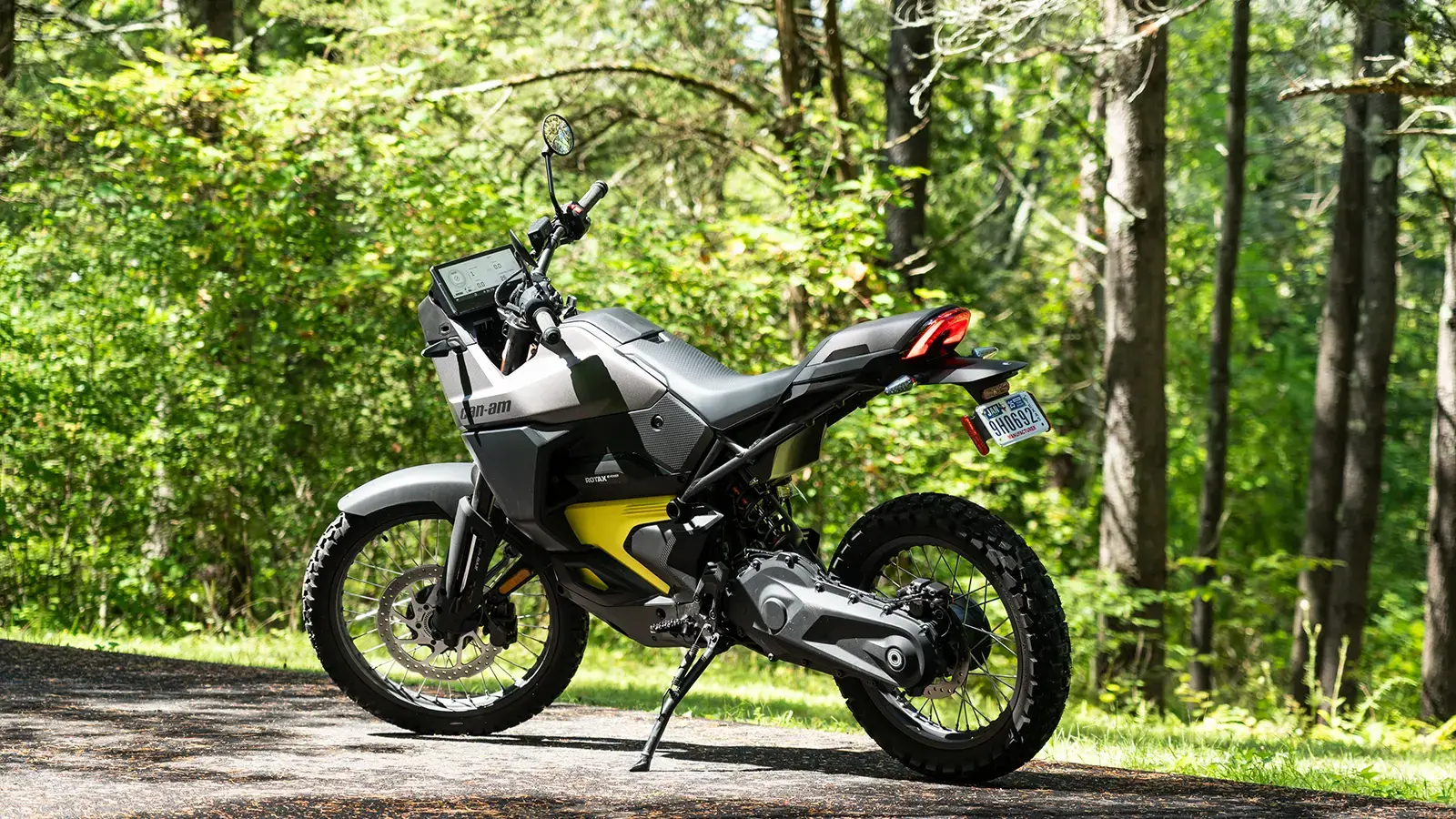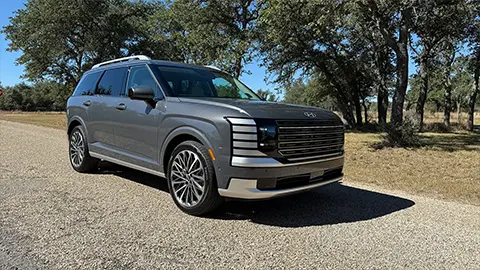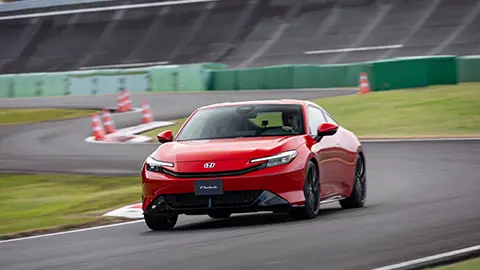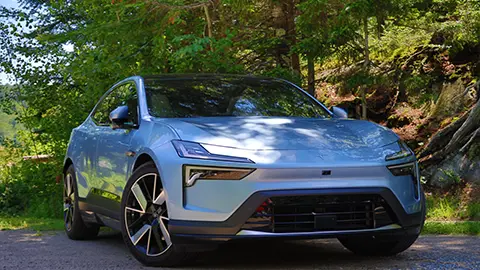Fast Facts – 2025 Can-Am Origin
🏎️ Power: 47 hp and 53 lb-ft from a single electric motor
🛣️ Range: 90 miles city miles, manufacturer estimated
🔌 Charging: 10–80% in ~60 minutes (350 kW)
🎯 Price: MSRP starts at $14,499 including destination
🏆 Safety: Standard traction control and anti-lock brakes
🎵 Tech: 10.24" touchscreen, Apple CarPlay built-in
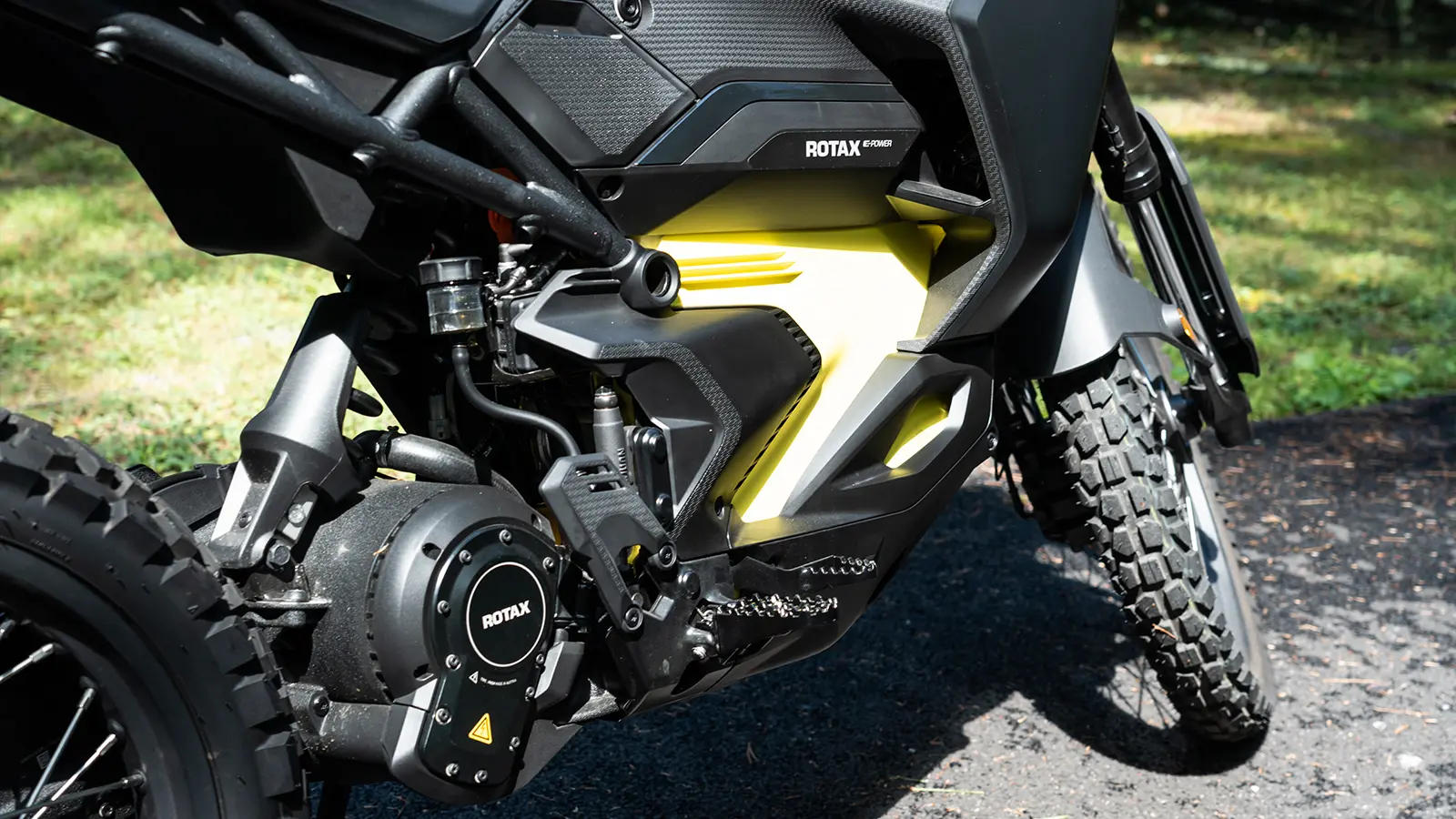
Short Range, Silent Bliss
I love the sound of motorcycling. Whether it's the roaring straight pipes on my 1965 BMW R69S or the burbling thrum of my Triumph Speed Triple, these noises make me smile ear to ear. But I've also come to love the absolute silence of riding an electric motorcycle. Deleting the noise from the equation makes motorcycling feel like flying, and silent riding at night on a curvy country road is practically a religious experience.
The market is full of wonderful, battery-powered, two-wheeled options, and the latest entrant comes courtesy of Can-Am. The Canadian powersports powerhouse has partnered with Austrian Rotax to create the Origin, a bike that fits in the all-terrain dual-sport mold but has enough concessions to comfort and usability to make it perfect for the daily grind.
Perfect, that is, if your commute doesn't take you too far from home. Here's what I discovered during my time with the 2025 Can-Am Origin.
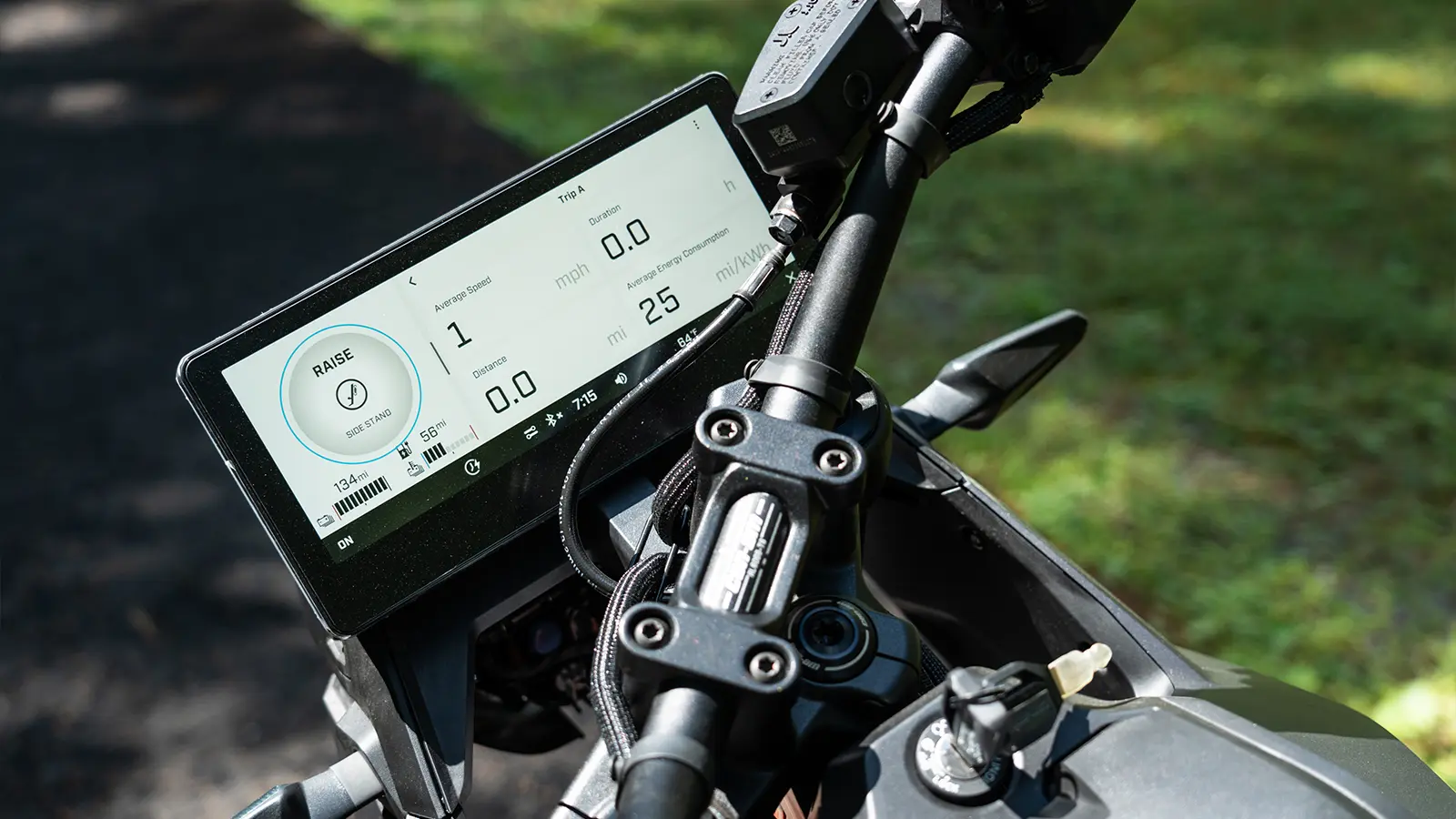
Trans-Atlantic Technology
The Can-Am Origin is a 47-horsepower, 53-foot pounds of torque electric motorcycle built around a powertrain developed by long-time Austrian engine gurus Rotax. There's no combustion here, though, just an 8.9-kilowatt-hour battery pack that's situated down low to form the center of mass for the Origin.
That powers a compact electric motor right at the pivot point for the single-sided rear swingarm, which uses a novel design with a chain that's fully enclosed. The knobby tire and wire-spoked rim that it turns look traditional enough, giving the Origin a bit of off-road cred.
The wide, grippy foot pegs help sell the package, too, as does the skinny seat and overall ergonomics of a motorcycle that's as easy to ride standing as it is sitting. While I'd prefer the handlebars maybe a half-inch higher, I immediately felt right at home in the saddle of the Origin, which is rare for me on dual-sport machines.
This type of motorcycle is meant to excel in off-road conditions, which typically means a tall, skinny saddle. At six feet in height, I'm reasonably tall myself, but I've been cursed with short legs. That usually leaves me tottering awkwardly at stop lights on bikes like this. Not so with the Origin. Its 34-inch saddle height means I can just barely get both feet flat on the ground.
Easy Rider
Ergonomics are key in a bike like this, but so is balance and power delivery. Many early electric motorcycles struggled to smoothly put all that torque down, meaning you had to be extremely careful with the twist-throttle lest you get bucked off the back.
At 47 horsepower, the Origin isn't the quickest bike on the planet, especially given its weight of 412 pounds, but its ease of riding is boosted by an exceptionally smooth traction control (TC) system. The bike pulled smoothly and quickly away in any conditions. I could pin the throttle even on loose gravel without kicking up a dirty rooster tail. At least, that is, until you turn the TC system off.
You can also disable the ABS on the rear, if you like, meaning this is a motorcycle that'll grow with you as your skills and confidence riding in all conditions expand.
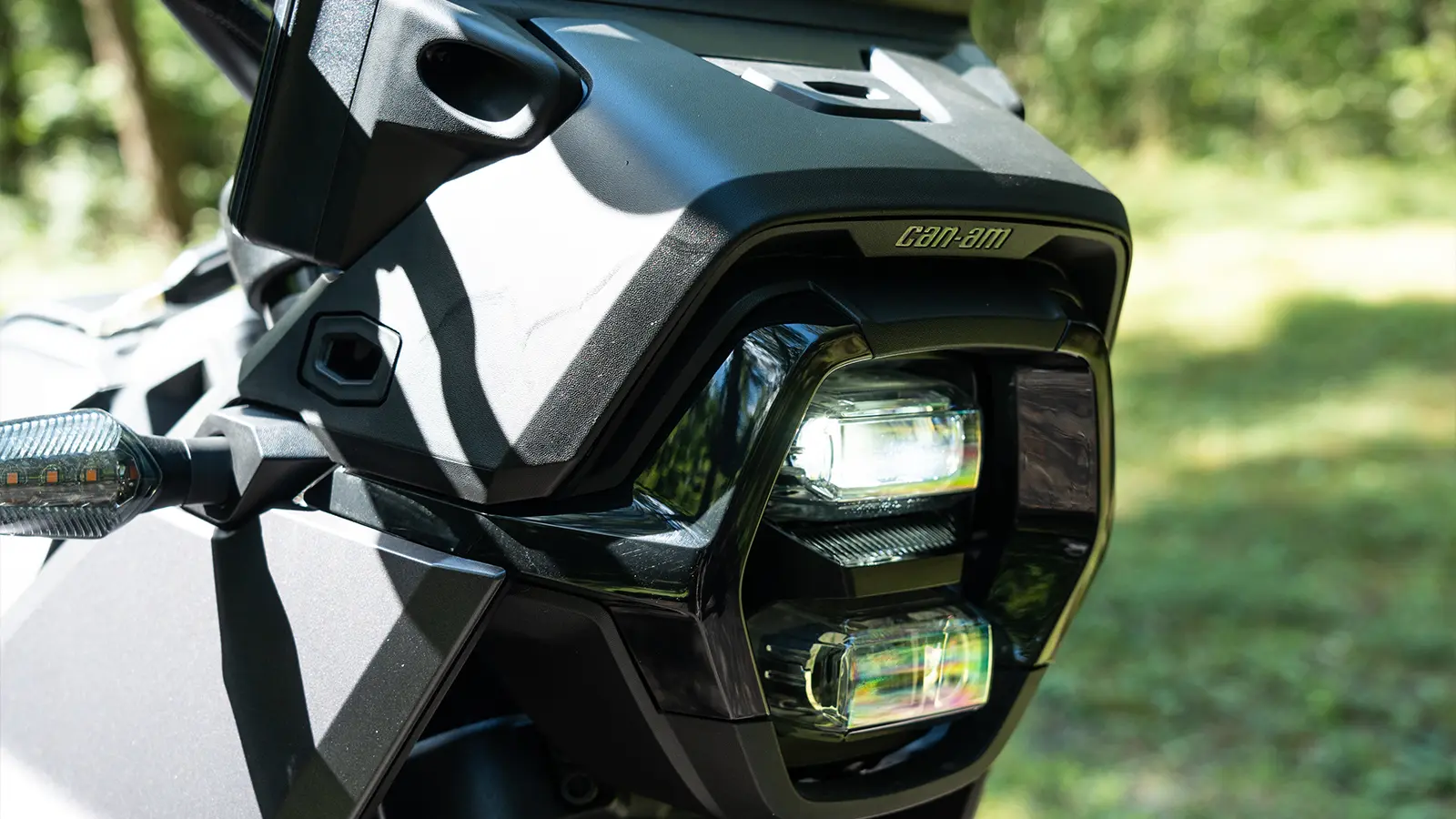
Button-Heavy Controls
To toggle through drive modes and various other settings, you'll have to learn an extremely busy set of buttons on the left grip. Information is displayed on a 10.25-inch LCD. It's dangerously close to information overload at times, especially when you add Apple CarPlay into the mix, but tech-loving riders will be right at home here.
The controls on the right grip look rather more traditional, but there's something novel here, too: a throttle that twists both ways. Pull it towards you, and the bike accelerates as you would expect. But when you're out there riding along, you can twist the grip away from you as well.
Do this, and the Origin boosts its regenerative braking, decelerating the bike with surprising intensity. This opens the door to a wholly new way of riding, a little bit like learning how to handle one-pedal driving in an EV car.
It took me a fair few miles before I was comfortable using this technique myself, but even after plenty of time in the saddle, I found myself struggling to smoothly mix regen at the rear wheel and braking at the front wheel with the lever. It feels like your right hand has enough to do on a motorcycle without adding another task.
I'd have preferred to see regen controlled by the traditional rear brake pedal on the right peg, or even a lever on the left grip, where the clutch traditionally lies.
Two-Wheeled Bliss
The Origin's lack of a clutch and single-speed nature also makes it super easy to control. Combine that with the precise throttle application, and I was immediately comfortable creeping this bike forward at very slow speeds over technical terrain.
It's much more fun when you're moving quickly, though. Those knobby tires mean the bike has a little bit of a loose feeling on the asphalt, moving around just a bit when ridden hard, but I found that just added to the fun of slinging the Origin through the corners. I immediately fell in love with its instant torque and playful nature.
But after spending more time in the saddle, I did notice a couple of areas where I'd like to see improvements. For one thing, I wanted a little more bite from the two-piston J. Juan front brake. I found myself relying on the recuperation or rear brake more than I'd prefer to bring the Origin down to a stop quickly.
Curious how EV batteries impact motorcycles? EV Battery Basics: Care and Longevity
The other area where I'd love to see improvement is range. The Origin is officially rated for up to 90 miles if you keep your speed down to city speeds. In extremely casual back-road riding, with the bike in Eco mode and me using the throttle judiciously, I managed to get an indicated 60 miles of range.
But who wants to ride like that? When I switched to the sportiest mode and really had fun with it, I drained the battery in less than 45 miles.
A Short-Range King
Stamina, then, is not the Origin's strong point, but that isn't necessarily the deal-killer that it might seem at first blush. For one thing, if you're riding primarily off-road, the lower speeds there will deliver far more range, which makes this an excellent choice for trail adventures.
The other thing is that the Origin charges quite quickly. On a Level 2 charger, the kind that usually takes overnight to juice up a typical EV, the Origin can go from zero to full in 90 minutes. A partial charge takes well under an hour. That enables lengthier rides out to your favorite lunch spot, if that spot happens to have a charger.
Yes, the range requires some planning, and the starting MSRP of $14,499 makes this something of a premium machine, but if you have the means and not too far to go, the Origin is a stellar ride in any conditions and a great entry to the joy of EV motorcycling.
⚡ EV Reviews and Comparisons
- 2025 Audi RS e-tron GT Performance Review
Audi’s 912-hp EV sedan proves electrification can deliver hypercar thrills.
Read More ➜ - 2026 Subaru Crosstrek Hybrid First Drive
Subaru’s latest hybrid SUV adds power, efficiency, and useful upgrades.
Read More ➜ - EV Battery Basics: Care and Longevity
How EV and hybrid batteries work, age, and how to extend their life.
Read More ➜





